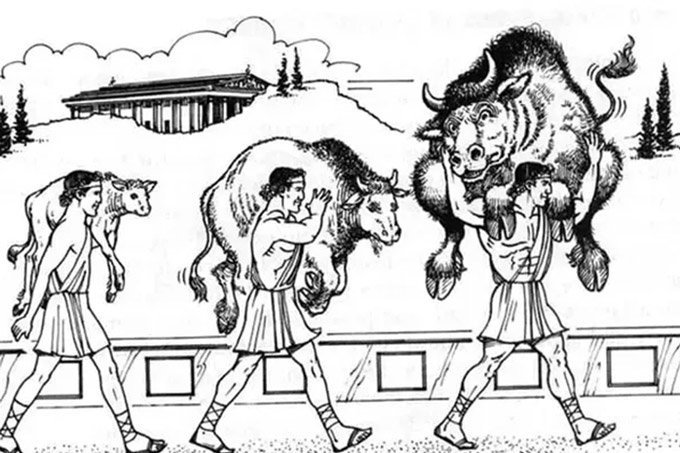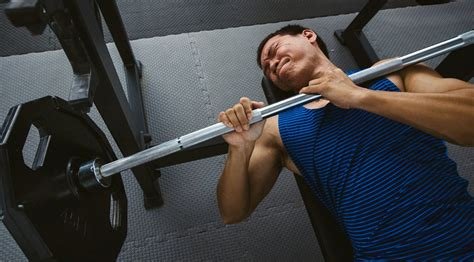
Personal Trainer and Feldenkrais Method Practioner with 20 years Experience in Old Street (Shoreditch) London. One to One and Online.
How to have the best workout - 5 tips
Research shows that exercises that recruit the most amount of muscle also will deliver you the most results and a most time effective fashion.
Lifting weights is literally a superpower in regards to the positive effects on health & longevity.
It can be one of the most rewarding things you can incorporate into your life. However if some key foundations to your training is missing it can become a frustrating and ultimately demotivating endeavour. Here are 5 ways to avoid this trap and optimise what you are doing-
1, Use the biggest bang for buck exercises
Research shows that exercises that recruit the most amount of muscle also will deliver you the most results and a most time effective fashion.
Your exercising should be built upon a foundation-
Squatting
Deadlifting
Lunging
Pushing
Pulling
Carries
There are many variations of these movements that can by cycled between with each programme and some variations may suit certain proportions better than others.
You can be assured you’ll be making progress if your numbers are steadily increasing on these movements.
Now this is not to say that i’m against isolation exercises, I come from a bodybuilding background and so have extensive knowledge on how to build muscle. Isolation exercises certainly have value for certain muscle groups and for maintaining structural balance.
However in the grand scheme of programme planning they should be tertiary, especially if time is very limited.
2, Set a time limit
Giving yourself a deadline of being in and out of the gym in say 45-75 mins will pressure you to stick to your your rest periods and not faff around getting distracted by other stuff.
Certain rest periods will be required between sets so i’m not promoting jumping the gun on these as the body does need time to recover between sets for optimal performance.
However if the programme is designed intelligently this will be taken into account and the time spent should still be efficient & effective.
3, Elminate all distractions
With increasing discussion of transhumanism; ie being integrated into our technology I’d argue we are already there in the way we are constantly plugged into our phones today. Emails, text’s social media and other apps bleed away our time and concentration.
When you are in the gym I recommend you either put your phone on airplane mode or elminate it completely.
There should be no more input than some music if it helps you to keep focused.
You could use an app, spreadsheet or even paper diary (retro idea eh!?) to track your gym workouts.
4, Have a plan
You should have a programme well established that you commit to sticking to for 6-8 weeks.
Going to the gym and then deciding what you are doing that day is a good way to have a crappy workout. Think of it as a project and that you are committing to working on that project for the allotted time.
5, Have someone to hold you to account
Self motivation is a finite resource.
Having a peer who also likes to exercise or a trainer to keep tabs on the consistency of your frequency and progression is a valuable way to help push yourself harder.
Gym training should be an egoless pursuit when it comes at the expense of your exercise form breaking down but it does require some grit and hard work in order to progress.
You must expose your body to something difficult in order to give it the signal to repair and come back stronger in order to better handle it the next time. This is a key foundation of why the body adapts positively from training.
Exercise Is Not About Suffering
More and more frequently today, especially in certain types of group training environments there is a ‘hardcore’ attitude promoted that if you aren’t suffering lots when training or dieting then you aren’t doing it right. This unfortunately puts off many people from even trying to start exercising. I discuss a better approach.
A certain mentality of suffering is promoted in many gyms these days. Both personal trainers, motivational speakers and certain types of group training environments there is a ‘hardcore’ attitude if you aren’t suffering lots when training or dieting then you aren’t doing it right.
This unfortunately puts off many average people from even trying to start exercising. They see it a a mountain not even worth attempting to scale.
Yes you have to work hard, achieving anything worthwhile in life takes hard work but its its not about machoism for the sake of it and it needs to be scaled appropriately according to the level you are at.
Below I discuss a better approach-
1, Training
Feeling like sh*t afterwards isn’t a measure of a good gym session.
It’s common these days to be bombarded by certain types of gyms and magazines promoting the attitude that working harder when exercising is always better. That you should always be crawling out of the gym after every workout in a sweaty puddle of destruction with nothing left in the tank.
This in my opinion is an idiotic and dangerous attitude.
Not only is approaching exercise like this is a sure fire way to quickly grow a hatred for it but I believe your chance of injury is also a lot higher.
This is especially applicable for beginners who’s fitness levels will be at a low baseline and haven’t yet built a better body awareness.
Sure you definitely need to train hard but you do not need to push every set to failure nor want to throw up after every workout, in fact I strongly discourage this as you’ll quickly plateau.
Steady Progression is the key
Your training needs to be focused on the key principles of getting stronger on primarily compound exercises whilst using good form. When combined with patience and persistence these are the ingredients for progress.
Now there are certainly limitations on how strong you can get otherwise everyone would be working up to a 300KG bench press. In order to truly maximise your strength you will at some point have to specialise your training (powerlifting as an example) but for the average person who goes to the gym this isn’t applicable and they are in most cases far away from their potential.
Like most things in life lifting weights will not always have a linear progression. There will be up’s & down’s and It’s natural to reach plateaus from time to time. This will require you to back off the weight you are using before ramping it back up again. The more advanced a lifter you become, the smaller the progress will be. What’s going on in your life; life stressors, quality of sleep and nutritional intake will also have an impact on your progress.
So there are many strategies to drive progress. Four key ways are:
increasing the weight you are lifting
performing more reps
adding more sets
reducing the rest period between sets.
I find its best to choose one of two of these methods per training cycle. Keep it simple.
Rep's & Weight Progression Example-
Flat Bench Press- 4 sets of 6-8 reps, 180 seconds rest
Week 1- 80KG x 8, 80KG x 8, 80KG x 7, 80KG x 6 = 29 reps total @ 80KG = 2,320KG total lifted
Week 2- 80KG x 8, 80KG x 8, 80KG x 8, 80kg x 7 = 31 reps total @ 80KG = 2,480KG total lifted
Week 3- 82.5KG x 7, 82.5KG x 7, 82.5KG x 6, 82.5KG x 6 = 26 reps total @ 82.5KG = 2,145KG total lifted
Week 4- 82.5KG x 8, 82.5KG x 8 82.5KG x 7, 82.5KG x 6 = 29 reps total @ 82.5KG = 2392.5KG total lifted
Squeeze out those small victories a rep and set at a time!
If you really want to get strong you have to look at this as a ‘long game’ and anyone who has increased their strength and transformed their body dramatically will have invested a number of years into the process.
2, Dieting
In a nutshell I feel that dieting shouldn’t be a sprint.
How many times have you already possibly tried crash dieting to then put the weight back on soon after possibly with a bit extra?
Yes creating a large calorie deficit for short periods of time certainly can work for a quick assault on your body fat but for most people this ends up being a yo-yo cycle.
During an aggressive diet you’ll likely be pretty miserable as you’ll be very hungry and possibly in a bad mood.
Whatever your time period is, one of the key important factors is maintaining muscle mass whilst dieting.
When in a calorie deficit you should ensure your protein intake is adequate. This for dieters is generally much higher than the RDA and for most people I set it at 2-3 grams per kilogram of bodyweight. The additional benefit of high protein is it helps with the feeling of satiety.
Adding strength training to this mix will further help you fight breaking down muscle and also help you to ‘shape’ your body that will look better at a lower body fat level.
You should aim at no more than 0.5KG weight loss per week and you should aim to do this over the course of at least 12 weeks ideally. If say you have more than 6 kilo’s to loose then you should aim to make this a longer time period to take this into account.
Again just like weight lifting dieting isn’t always a linear progression however you have to trust the process you are following reminding yourself whats most important.
Bodyweight will fluctuate lots depending on you hydration status, sodium intake, bowel content, hormonal cycle (for both men & women) and how much you have slept.
Track your weight without getting obsessed about it and look at the trend over the weeks and the month rather than from day to day. It’s much more likely to look something like this-
Wrap Up
Extremes whether they are with exercise or dieting are rarely sustainable.
Crafting a lifestyle that has good balance of exercise and sensible eating must incorporate patience and persistence.
In addition to this your fitness regime should complement your other interests in life, it should not be the sole focus.
In the pursuit of looking good make sure you aren’t missing out on health and living life!
How To Have A Good Workout- 4 Tips
Going to the gym is an time investment in improving your body, make sure you get the best return from your investment. Here are 4 simple tips on optimising your time spent in the gym.
Going to the gym is an time investment in improving your body, make sure you get the best return from your investment. Here are 4 simple tips on optimising your gym sessions-
1, Progressive Overload
If you want to change how your body looks you have to give it a reason to. Adaptions to training are simply a response by your body to being exposed to a ‘stress’ and then adjusting structurally (muscles, tendons, ligaments, bones), neurologically and chemically (energy systems) to better be able to handle this stress the next time.
Over time it’s essential to gradually push forwards to get stronger. If you are lifting the same weights that you did 3 years ago you’ll likely look the same.
On this theme it’s also important to stick to a particular set of exercises for some time in order to give yourself time to improve. Changing your programme too frequently doesn’t allow this to happen.
Generally I’d recommend to stick to a particular programme for at least 6-8 weeks. For more advanced lifters with several years of lifting experience sticking to the same exercises but adjusting the sets, reps & tempo after 2- 4 weeks can be sometimes be a strategy to promote continued progress.
2, Good form, good form Dammit!
What good is a gym programme if you find yourself injured several times a year? Progress takes time and injuries can set you back weeks and even months. Unfortunately we loose gains we make in the gym faser than we create them.
Exercises have been created in mind to work a muscle through a full range of motion in order to maximise the adaptive response. For the majority of people using a full range of motion is your best strategy for safe & effective training.
Using a partial range of motion can be useful for certain specific situations such as in Powerlifting & Strongman or if your sport has a particular demand to be strong in a narrow range of motion. Specialisation training to help get through sticking points.
However for most of the gym population its doing nothing more than stoking your ego and possibly increasing your risk of injury.
An additional benefit to using a full range of motion is the exercise is in itself a ‘loaded stretch’ so over time using a full range of motion can help to ‘unstick’ some areas that might otherwise feel tight.
https://www.ncbi.nlm.nih.gov/pubmed/23629583/
3, Emphasise Compound Movements First
Exercises such as the Squats, Deadlifts, Lunges, Chin/Pull-Up’s, Dips, Presses and Rows should be your bread & butter movements you spend the most time on when exercising. These types of exercises active the maximal amount of muscles.
Focusing your energy progressing from shoulder pressing overhead 30KG’s to 50KG’s is going to do much more for your shoulder development then performing 3 sets each of a front raises, side raises and rear deltoid raises with a 4kg’s weight.
Similarly improving on being able to perform 3 Chin-up’s & Dips to being able to do 9 is going to do way more for your arm development than performing 8 different exercises for your biceps and triceps.
No don’t get me wrong there’s nothing wrong with adding some supplementary direct arm, shoulder or glute work but only after doing the basics compound lifts first.
4, Set A Time Limit
Following on the previous recommendation you should set a time limit to the amount of time you spend on any given training session.
45-60 minutes maximum per session 3-4 x per week is optimal for most people. Whilst gym sessions can be longer some some spots specific purposes, I.E. when training some involving a lot technique like olympic lifting or requiring longer rest periods for maximum strength training & powerlifting this isn’t appropriate for most people.
I recommend to set strict rest intervals between your exercises and use either something like an old digital Casio watch or a dedicated timer so that you avoid the temptation of getting distracted by your phone. I am of the belief that Tinder has done much to ruin peoples gains over the years!
Get in, primarily focus on progressing on the big compound movements first and then leave. It’s a spiral diminishing returns to spend any more time than this.
Ultimately the gym should be a tool to help enhance your experience of life outside of the gym and should not be the sole focus of your spare time.















